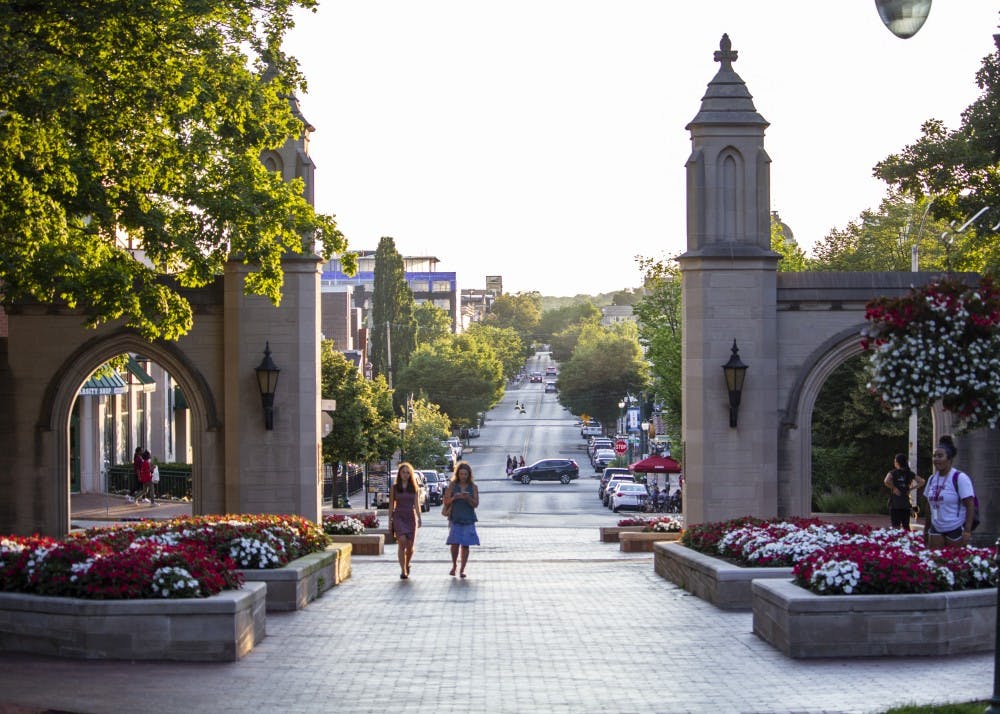As students move into their residence halls this week, the core of IU has returned to campus -- and the city of Bloomington.
With about 43,000 students and 9,000 employees, IU affiliated persons make up approximately half of Bloomington’s population, city council member Stephen Volan said. While high level officials communicate regularly, there are now talks of representing student voices in city affairs as well.
“Just the fact that we're having the conversation at all, I think, is a break through and is a positive development,” Volan said.
Last spring, the IU Student Association had its first talks with the city government in more than 20 years, said senior Alex Wisniewski, incoming IUSA president. In these meetings, they discussed a liaison role to allow students to give input on city affairs.
Pending the approval of both IUSA and the city council, the position could begin as early as this semester. Discussions with the full city council are set to begin as school starts, Wisniewski said, but he plans to appoint this student as a non-voting member of the council.
The idea to provide student perspectives on city decisions in part arose from two developments last year: the beverage tax and the armored truck.
During the heated debates over the latter, Wisniewski said there was concern among the student body that the truck would be used as a sign of force during student demonstrations. A student liaison position could help clarify these types of problems before they arise, he said.
“There’s a plethora of issues that we think students could have a very tangible effect on,” Wisniewski said.
While student viewpoints differ from concerns of University officials, Volan said these conversations with representatives of the student body could lead to a better relationship with the University as a whole. The city votes on issues weekly that affect students’ daily lives, Volan said, but many students do not realize how embedded they are in local issues.
“If nothing else, if we can show students that they are truly citizens of Bloomington, even as they are students at IU, that would be a big accomplishment,” Volan said.
Like many other town-gown relationships, the term many officials use to describe the relationship between an institution of higher education – the gown – and its city – the town – Bloomington and IU are interconnected, said Kirk White, IU’s coordinator for city-campus relations.
But conflict in town-gown relations is common, said Lisa Dvorak, president of the International Town & Gown Association. In general, a higher education institution is primarily concerned with retention of students, which is not necessarily the driving goal of a municipal government.
An annual survey among the organization’s members, who work on either the town or gown side, consistently identifies noise, housing affordability and unavailability, neighborhood conflicts, alcohol and student housing and rentals as common issues nationwide.
But the biggest issue, Dvorak said, is establishing trusting relationships.
“There is, happily, a very friendly and congenial relationship between the city and the University, working as partners,” said Yael Ksander, communications director for the office of the mayor.
There are no legal rules governing relations between IU and Bloomington. However, White said University and senior city leaders talk weekly.
Some departments, such as the Bloomington and IU police departments, may interact on a daily basis. The Bloomington Fire Department provides IU’s fire protection. With a $1.6 million operating budget for the Bloomington campus alone, IU is a driving force in the city’s economy. Ksander said the two entities are so fluid, divisions become arbitrary.
The two administrations collaborate on some public works projects and joint beautification projects, White said. Most recently, they signed a memorandum of understanding to bring a dockless bikeshare program to Bloomington and campus.
Ksander said these relations are largely the product of Mayor John Hamilton’s work since 2016 to conduct regular, official town-gown meetings with high level officials from both sides. Meanwhile, informal conversations between members of the IU and Bloomington communities happen constantly.
But not all parties view these relations so positively. What White described as an “open door, open phone” relationship, city council member Stephen Volan said is largely separate.
The Bloomington Comprehensive Plan is notably absent from IU’s 300 page-long Master Plan, Volan said. And when Bloomington is mentioned, it is merely an acknowledgement that IU is part of Bloomington rather than a reference to city governance, he said.
White and Ksander said the University consults the city government ahead of decisions that would affect Bloomington, but Volan said the University does not plan with the city in mind. If the University told the city of its intentions to increase enrollment, he said, the city could plan its housing more appropriately.
“To say the very least, I think it should be closer,” Volan said. “But that’s not the nature of the two beasts.”




